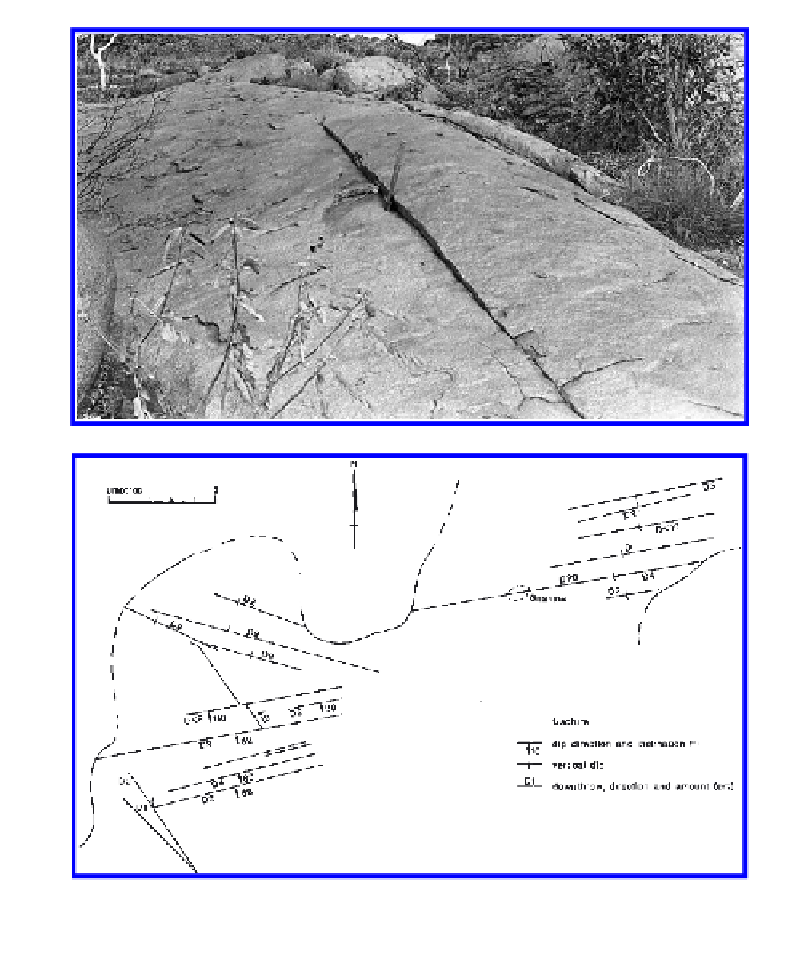Geology Reference
In-Depth Information
(b)
(c)
Figure 11.1.
(b) Minor scarp on low dome, western Pilbara, Western Australia. (c) Horst and graben delin-
eated by minor fault scarps, The Granites, Mt Magnet, Western Australia.
Some of the partings are merely latent or secondary fractures for they conform to the regional
fracture pattern (
Fig. 11.3)
,
but others cut across pre-existing structures. Split rocks occur in
arid lands such as the Australian deserts, as well as such humid tropical regions as the Tampin area
of West Malaysia (Tschang, 1962), in temperate regions like the Mt. Lofty Ranges and Eyre
Peninsula, South Australia, as well as nival areas like the Pyrenees, the uplands of the Iberian
areas the splitting affects exposed rocks.
11.1.2
Origin
Several writers have attributed split rocks to heating and cooling under hot desert conditions.
Whitaker (1974) records the splitting of rock near Halls Creek, in northwestern Australia, in 1952,
shortly after a rainstorm. Unfortunately, it is not known whether the split developed along a


